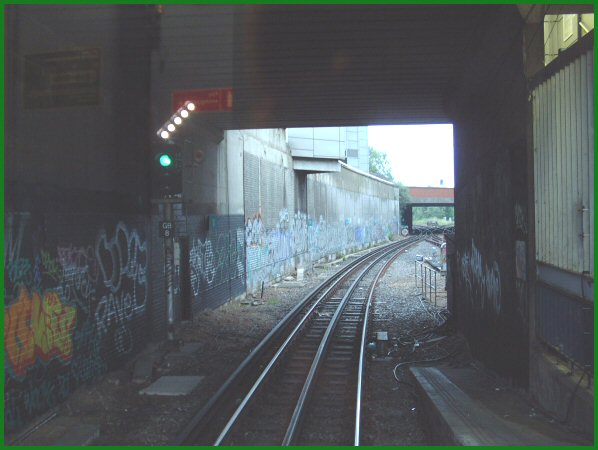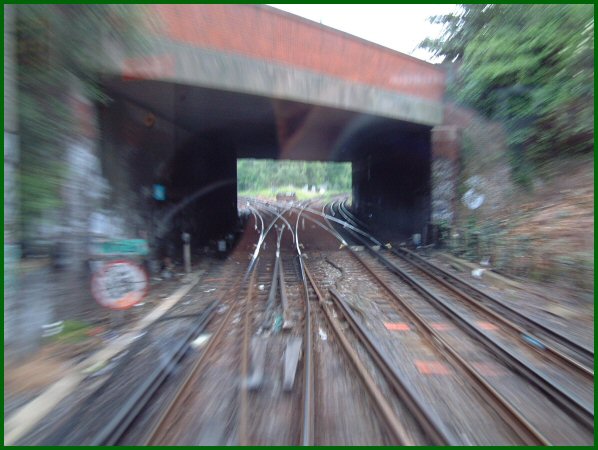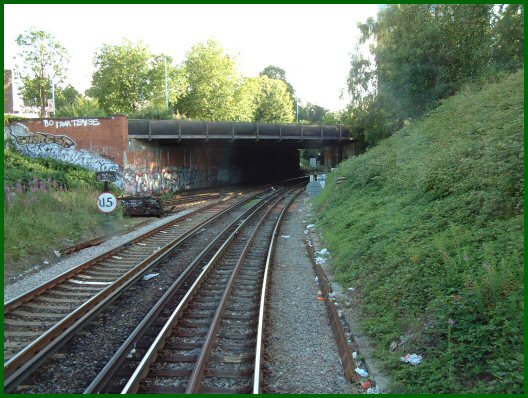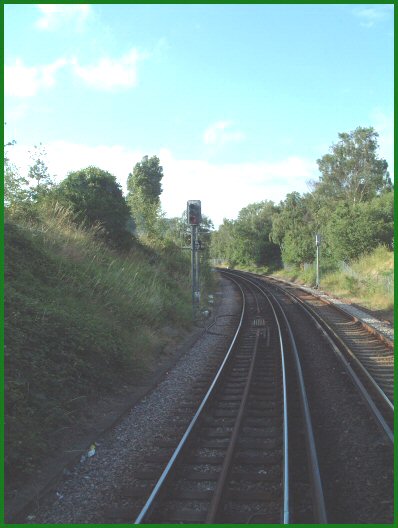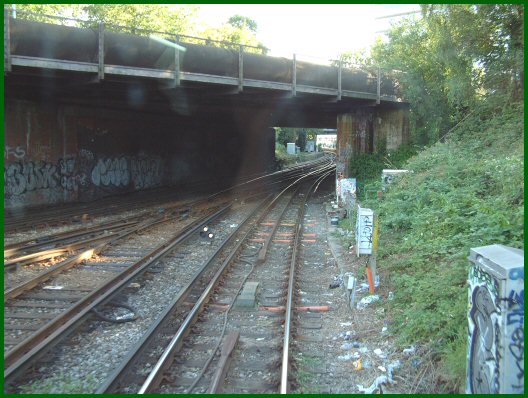 |
 |
|
One allows trains to reverse from the westbound platform back to Turnham Green for the District Line or in the case of OverGround trains (originally Silverlink trains when this page was written) back towards South Acton on the North London Line. As these moves are done in passenger service they are controlled by means of a coloured light ‘wrong road’ starter. However, the big difference is that, because a driver can be offered two routes, there has to be an indication which rote has been set by the signaller. On London Underground this is usually done by means of a junction route indicator (which either indicates a plain green aspect or a green with three illuminated lights), but at this location it is by a device similar to a ‘Theatre Type Route Indicator’, which is normally associated with a shunt signal and shows a number. However instead of a number here it shows a letter - ‘D’ for the District (and therefore back to Turnham Green) or an ‘N’ for the North London Line. This move is quite routinely used. |
 |
|
A less frequently used move is from the eastbound platform and which enables a train to go back to Richmond. The big difference here is that, for the District Line, it means that a driver goes onto a part of the North London/OverGround Line which, for the purpose, has a short extension to our four rail current supply system. In itself the move is not complicated, but a driver must always take care not to go past the end of the current rails. There are two other unusual factors in this. Firstly the next signal (not shown on the diagram but visible in the photos below) does not have a trainstop associated to it. Secondly there is no ‘Limit of Shunt’ board to indicate the limit. Our Line Supplement on the subject reads as follows: ‘when signal GB8 clears (plain green), proceed at caution, no further than the point where the negative rail ends’. In fact a yellow aspect is also acceptable - this allows the train to proceed as far only as the next signal, which is well within the limit of the ‘four rail’ layout. |
|
|
|
|
|
|
||||||||||||||||||||||||||||||||||||||||
|
|
 |
